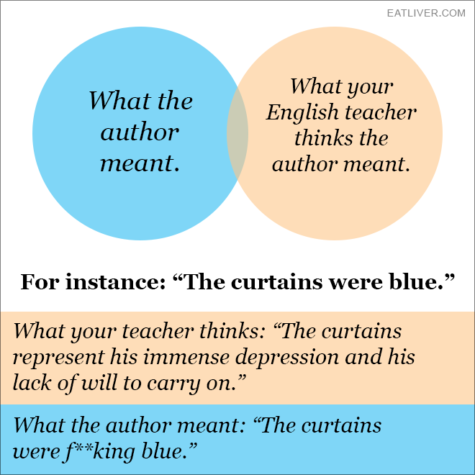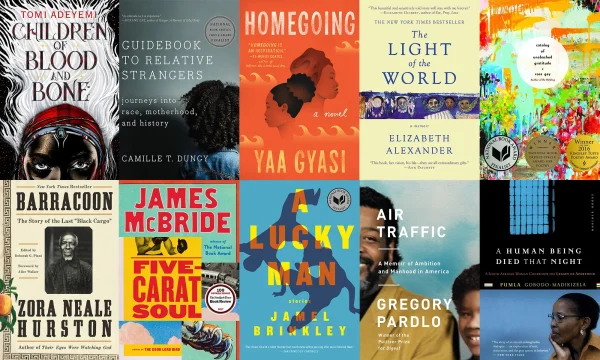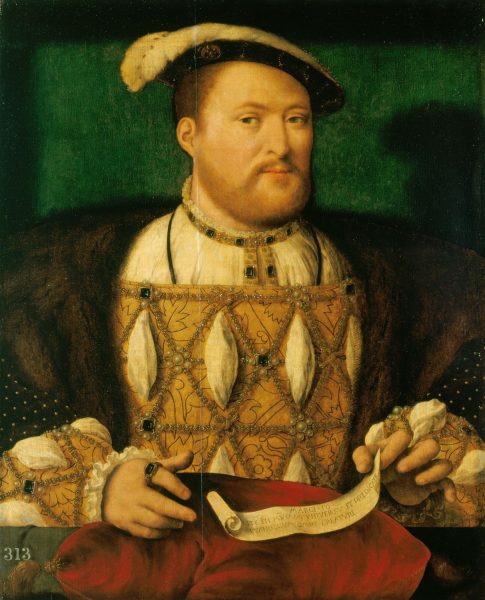Why ARE the curtains blue? A defense of over-analyzing


I’m sure everyone has had that one English class where the teacher forced you to read into EVERYTHING. “Why are the curtains blue in this chapter?”, they would ask a sea of half-asleep faces. “I don’t know, Ms. Smith,” the class would respond, “Maybe the curtains are just blue.”
This sentiment has been echoed all over, from the classroom to memes on every website. People seem to think that this kind of analysis is a useless waste of time peddled by English teachers who need to fill up an hour of class. But is this really the case?
I want to share a personal anecdote. At the end of the 2021-2022 school year, I participated in Shorecrest’s ArtReach project. We went to museums and talked about art, then led groups of students in conversations about art. I went into this project with a pretty standard mindset: The curtains are blue because they just are. For most of the art we looked at, this was fine. A portrait is just a portrait. Maybe we can infer something about the person painted, but at the end of the day, it is a very easy piece to look at. Then, we moved into looking at abstract art.
The piece that changed everything for me was called Saddle by Weldon Butler. This was part of the small collection in the Shorecrest library that we kept coming back to. The first time I looked at this piece, I was lost. I could name the individual parts of the work like we had practiced so many times before, but when it came to emotion and meaning I had nothing.

The rest of the group felt the same. For the first time since the start of the project, we had nothing to say. Then, someone spoke up.
“Uh…It kind of reminds me of building something.”
Then, someone else expanded off of that observation.
“Yeah, and it kind of looks like a sewing pattern, but made out of construction materials.”
We started to spitball off of each other, throwing out random ideas and things that the piece reminded us of. These ideas got more and more abstract until we settled on the conclusion that this piece represents control. Sewing, construction, and riding a horse (hence the title, Saddle) are all activities that require a steady hand and an element of control.
Is this what Weldon Butler meant to express in his piece? I have no clue! Butler, in fact, passed away in 2019 and was never very open about what his art meant. We have no way of knowing if we were right in our analysis, if he had a completely different message to get across, or if he had just stuck things together that seemed cool.
But what I found is that the actual answer we arrived at was pretty much irrelevant. What mattered was the discussion we had and the thoughts that came up. Asking these broad questions and talking about what we thought helped us to strengthen our discussion skills as well as expanding our ideas about art in general.
Let’s bring this back to literature. In my opinion, this medium is far easier to analyze than abstract art, as written texts have a central idea most of the time.
Speaking in a more literal sense, small details can be incredibly important or add another layer to the story. Think about it; the color of the curtains is such a specific thing to write about. If a detail so small comes up enough times to catch someone’s attention, there’s a good chance that there’s a reason behind it.
At the end of the day, we rarely have any way of knowing for sure why the curtains are blue. But I think it’s valuable to stretch yourself and come up with a reason, even if it’s way out there. Next time you’re reading a book, looking at a piece of art, or even watching a movie, I encourage you to ask yourself the following: Why do I think the curtains are blue? And if the answer is, “they just are,” that’s ok too! The real answer is the process of asking questions and coming up with your own answers. Go make your English teachers proud.







